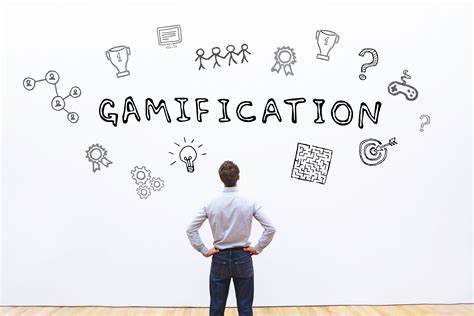Unleashing Social Learning Potential: Empowering Corporate L&D in the Digital Age
- Jennifer Adams
- July 7, 2023
- 9:43 am
Harnessing the Power of Social Learning: Revolutionizing Corporate Learning & Development
In today’s fast-paced digital age, corporate learning and development (L&D) professionals are constantly seeking innovative ways to enhance employee growth and knowledge acquisition. As technology continues to shape the way we learn, the potential of social learning has become more evident than ever. In this blog article, we will explore the power of digital learning communities, virtual learning environments, and social learning platforms in unlocking the true potential of social learning. Join us as we delve into unique insights and actionable techniques that will empower L&D professionals to revolutionize their training strategies.
Want to skip the article? Download our comprehensive free eBook of Learning Content Strategy
Connecting Beyond Boundaries: Exploring Digital Learning Communities
In the digital age, traditional learning boundaries are expanding, and digital learning communities have emerged as dynamic spaces where professionals can engage, collaborate, and share knowledge. These communities go beyond traditional classroom settings and offer individuals the opportunity to connect with like-minded professionals from diverse backgrounds and industries. By actively participating in such communities, L&D professionals can expand their networks, gain fresh perspectives, and discover innovative approaches to corporate learning. The power of digital learning communities lies in fostering engagement, facilitating continuous learning, and breaking down silos within organizations. It allows professionals to tap into a global pool of knowledge, create meaningful connections, and stay updated with industry trends. Embrace the power of digital learning communities to foster engagement and encourage continuous learning.
Stepping into New Realities: Transformative Virtual Learning Environments
As technology advances, virtual learning environments have revolutionized the way corporate training is delivered. These immersive platforms provide a simulated setting that engages learners, promotes experiential learning, and facilitates knowledge retention. By leveraging virtual environments, L&D professionals can create interactive and gamified experiences that enhance employee engagement and skill development. Through virtual simulations, learners can practice real-world scenarios in a safe and controlled environment, allowing them to develop critical thinking, problem-solving, and decision-making skills. Additionally, virtual environments provide opportunities for personalized learning, allowing learners to progress at their own pace and focus on areas that require more attention. The benefits of virtual learning environments extend beyond traditional classroom boundaries, enabling organizations to deliver training globally, irrespective of geographical limitations. Incorporate virtual learning environments to bring training programs to life and enable learners to practice real-world scenarios.
Collaboration Simplified: Unleashing Social Learning Platforms
Social learning platforms have emerged as key facilitators in the digital age, transforming how we connect, share ideas, and collaborate. These platforms enable learners to connect, share ideas, and collaborate in real-time, fostering a sense of community and collective knowledge creation. By harnessing the power of social learning platforms, L&D professionals can promote peer-to-peer learning, encourage knowledge sharing, and provide personalized learning experiences. Social learning platforms offer a wide range of features, such as discussion forums, live chat, video conferencing, and collaborative projects, which enable learners to interact and learn from each other. These platforms also provide analytics and reporting tools that help L&D professionals track learner progress, identify knowledge gaps, and refine training strategies. When choosing a social learning platform, it is crucial to consider factors such as ease of use, customization options, security features, and integration capabilities with existing learning management systems. Explore the vast array of social learning platforms available and choose the one that aligns with your organization’s goals and learning objectives.
Actionable Tips for Success
Nurturing Collaboration: Fostering a Culture of Knowledge Sharing
Foster a culture of collaboration and knowledge sharing within your organization by encouraging employees to actively participate in digital learning communities. Establish clear guidelines for engagement, facilitate discussions, and recognize and reward contributions.
Immersive Experiences: Designing Interactive Learning Journeys
Design interactive and immersive learning experiences using virtual environments to enhance learner engagement and knowledge retention. Incorporate gamification elements, scenario-based simulations, and virtual labs to create memorable and impactful learning experiences.
Choosing the Right Platform: Integrating Social Learning Platforms
Select a social learning platform that suits your organization’s unique requirements and integrate it seamlessly into your training programs. Ensure it provides a user-friendly interface, robust collaboration features, and the ability to track and measure learner progress.
Engaging Interactions: Meaningful Learning through Social Platforms
Promote the use of discussion forums, live chat features, and collaborative projects on social learning platforms to facilitate meaningful interactions among learners. Encourage learners to share their insights, ask questions, and provide feedback to create a vibrant and engaging learning community.
Evaluating and Enhancing: Refining Social Learning Initiatives
Continuously assess the effectiveness of your social learning initiatives and make adjustments based on learner feedback and evolving organizational needs. Leverage analytics and reporting tools provided by social learning platforms to gain insights into learner engagement, knowledge acquisition, and overall program effectiveness.
Embracing the Digital Revolution: Empowering L&D through Social Learning
The digital age has opened up a world of possibilities for learning and development professionals. By embracing digital learning communities, leveraging virtual environments, and harnessing social learning platforms, L&D professionals can unlock the true potential of social learning. Remember, the key lies in fostering collaboration, embracing immersive experiences, and facilitating meaningful interactions. Empower your organization’s learning culture by embracing the transformative power of social learning in the digital age.
By incorporating these actionable tips and techniques, L&D professionals can lead the way in revolutionizing corporate learning and development. Let’s embrace the digital revolution and unleash the power of social learning for a brighter, more collaborative future.
Unlocking Social Learning Potential in the Digital Age
Transition words used: In the digital age, beyond traditional, like-minded professionals, actively participating, expand their networks, gain fresh perspectives, discover innovative approaches, fostering engagement, facilitating continuous learning, breaking down silos, tap into, create meaningful connections, stay updated, industry trends, as technology advances, revolutionized the way, immersive platforms, simulated setting, engage learners, promote experiential learning, facilitate knowledge retention, leverage virtual environments, interactive and gamified experiences, enhance employee engagement, skill development, practice real-world scenarios, critical thinking, problem-solving, decision-making skills, personalized learning, progress at their own pace, geographical limitations, bring training programs to life, harnessing the power, connect, share ideas, collaborate in real-time, foster a sense of community, collective knowledge creation, promote peer-to-peer learning, encourage knowledge sharing, personalized learning experiences, discussion forums, live chat, video conferencing, collaborative projects, interact and learn from each other, analytics and reporting tools, track learner progress, identify knowledge gaps, refine training strategies, ease of use, customization options, security features, integration capabilities, foster a culture of collaboration, actively participate, establish clear guidelines, facilitate discussions, recognize and reward contributions, interactive and immersive learning experiences, incorporate gamification elements, scenario-based simulations, virtual labs, select a social learning platform, user-friendly interface, robust collaboration features, track and measure learner progress, meaningful interactions among learners, share their insights, ask questions, provide feedback, vibrant and engaging learning community, continuously assess the effectiveness, make adjustments, learner feedback, evolving organizational needs, leverage analytics and reporting tools, gain insights, overall program effectiveness.

Download free L&D content

Free eBook: Blended Learning
Blended Learning. Solved in one solution. Get the right blend of modern and traditional learning. Why Blended Learning is important? What works for one employee
Modern L&D Strategy by Nick van Dam
Download a free copy of our best-selling eBook with the newest trends in Learning & Development strategy by the former Global Chief Learning Officer at McKinsey & Co.

Free Learning & Development content

Optimizing L&D for Hybrid Workforces: Best Practices and Success Stories
In the contemporary corporate world, the emergence of hybrid workforces has heralded a significant paradigm shift in how organizations operate. For Learning and Development (L&D), this shift brings about unique challenges and opportunities. This article is your guide to navigating the complexities of hybrid workforces, offering comprehensive insights, practical tips, and inspiring success stories.

10 Strategies for Improving Learning Engagement and Motivating Learners
How can you keep your learners engaged and motivated? Whether you’re working in corporate training or as an educator, it’s important to have effective learning engagement strategies in place. By utilizing the right tools and techniques, you can enhance the learning experience and make your training more successful.

How to maximize employee engagement in L&D while minimizing costs
mployee engagement in learning and development (L&D) programs is crucial for the success of any organization. Engaged employees are more productive, more motivated, and more likely to stay with the company. However, with tight budgets and limited resources, it can be challenging for organizations to create L&D programs that engage employees while minimizing costs. In this article, we explore strategies for maximizing employee engagement in L&D programs while minimizing costs.



